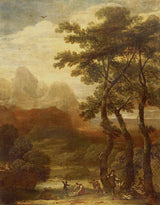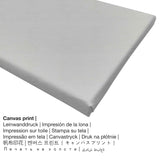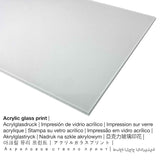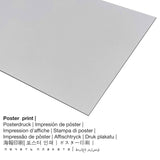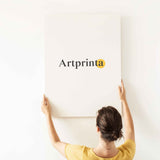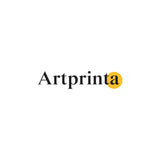Ignacio de Iriarte, 1640 - Okirikiri ala na ndị dinta - ọmarịcha nka
Ụtụ gụnyere. Mbupu gbakọrọ na ndenye ọpụpụ.
Họrọ ihe kacha amasị gị
Maka ngwaahịa ọ bụla anyị na-enye ụdị nha na ihe dị iche iche. Nha na ihe ndị a bụ nhọrọ anyị na-enye gị maka nkeonwe:
- Kwaaji: The printed canvas stretched on a wood stretcher frame. In addition to that, a printed canvas makes a soft and positive impression. How do I hang a canvas print on the wall? Canvas prints are relatively low in weight. This means, it is easy to hang the Canvas print without the use of extra wall-mounts. Therefore, a canvas print is suitable for all types of walls.
- Ihe odide acrylic glass: An acrylic glass print, which is sometimes labelled as a print on plexiglass, will convert an artwork into wonderful home decoration. Your own copy of the work of art is being custom-made with the help of modern UV print technology. It makes deep and rich colors. The major upside of a plexiglass fine art copy is that sharp contrasts and smaller painting details become more exposed due to the granular tonal gradation. The real glass coating protects your custom fine art print against light and external influences for between 4 and 6 decades.
- Aluminom dibond (ọkpụkpụ ọla): This is a metal print manufactured on aluminium dibond with an outstanding depth effect. For the Print On Aluminum Dibond, we print your favorite artwork right on the surface of the white-primed aluminum composite. The white & bright parts of the artwork shine with a silk gloss but without any glare.
- Akwụkwọ mmado ebipụtara (akwa akwa akwa): The Artprinta poster print is a UV printed sheet of flat cotton canvas paper with a slight surface finish, that reminds the actual version of the work of art. Please keep in mind, that depending on the size of the poster print we add a white margin 2-6cm around the work of art, which facilitates the framing with a custom frame.
Nkwupụta iwu: We try everythig possible to depict the art products as precisely as possible and to illustrate them visually on the product detail pages. Nevertheless, the tone of the print materials and the imprint might diverge slightly from the presentation on your monitor. Depending on your settings of your screen and the quality of the surface, not all colors are printed one hundret percent realistically. In view of the fact that all our art prints are printed and processed manually, there may also be minor differences in the motif's exact position and the size.
Ozi nkowa mgbakwunye sitere na webụsaịtị ihe ngosi nka (© - Rijksmuseum - Rijksmuseum)
Landscape with the foreground hunters among a group of three trees. In the distance, a town located at the foot of a mountain.
Banyere ngwaahịa a
Nke a gafee 380 afọ ọrụ nka e kere site na nwoke onye na-ese ihe Ignacio de Iriarte. E wezụga nke a, artpiece bụ nke Rijksmuseum's digital collection. We are happy to state that the artpiece, which is in the public domain is provided with courtesy of Rijksmuseum.In addition, the artpiece has the creditline: . Further, the alignment of the digital reproduction is Eserese na akụkụ ruru nke 3: 4, nke pụtara na ogologo bụ 25% mkpụmkpụ karịa obosara. Ignacio de Iriarte was a painter, whose artistic style can mainly be classified as Baroque. The painter lived for 49 afọ a mụrụ na 1621 in Azcoitia, Guipuzcoa, Basque Provinces, Spain and deceased in the year 1670 in Seville, Sevilla province, Andalusia, Spain.
Iberibe nkọwa nka
| Aha nka nka: | "Okirikiri ala na ndị dinta" |
| Nhazi nka nka: | sere |
| Okwu mkpokọta: | nka ochie |
| oge: | 17th narị afọ |
| Afọ nka: | 1640 |
| Afọ nka: | gbara afọ 380 |
| Egosiputara na: | Rijksmuseum |
| Ebe ngosi nka: | Amsterdam, Netherlands |
| ibe weebụ: | Rijksmuseum |
| Akwụkwọ ikike nka: | ngalaba ọha |
| Site n'aka: | Rijksmuseum |
Banyere ihe
| Ụdị edemede: | nka nka |
| Usoro mmeghari: | dijitalụ mmeputakwa |
| Usoro mmepụta: | mbipụta dijitalụ |
| Nlụpụta: | emere na Germany |
| Ụdị ngwaahịa: | a na-achọ |
| Ihe eji eme atụmatụ: | ịchọ mma mgbidi, mkpokọta nka (mmeputakwa) |
| Nhazi nka nka: | nhazi ihe osise |
| Njikwa oyiyi: | 3: 4 |
| Mmetụta akụkụ onyonyo: | ogologo bụ 25% mkpụmkpụ karịa obosara |
| Nhọrọ akwa: | akwụkwọ mmado (akwụkwọ kwaaji), mbipụta ọla (aluminium dibond), mbipụta kanvas, mbipụta iko acrylic (nwere ezigbo mkpuchi iko) |
| Kanvas n'elu etiti ihe ndọtị (mbipụta akwa akwa): | 30x40cm - 12x16", 60x80cm - 24x31", 90x120cm - 35x47", 120x160cm - 47x63" |
| Acrylic glass print (nwere ezigbo mkpuchi iko) nhọrọ: | 30x40cm - 12x16", 60x80cm - 24x31", 90x120cm - 35x47", 120x160cm - 47x63" |
| Nhọrọ nha nke akwụkwọ mmado (akwụkwọ kwaaji): | 30x40cm - 12x16", 60x80cm - 24x31", 90x120cm - 35x47" |
| Nhọrọ Dibond (ihe alumnium) nhọrọ: | 30x40cm - 12x16", 60x80cm - 24x31", 90x120cm - 35x47" |
| Igwe onyonyo: | adịghị |
Onye na-ese ihe
| aha: | Ignacio de Iriarte |
| Aha ndị ọzọ: | Yriarte Ignacio de, Ignacio de Iriarte, Yriarte, Iriarte Ignacio de, Iriarte, Yriarte Ignacio |
| okike onye nka: | nwoke |
| Nationality: | spanish |
| Ọrụ: | onye na-ese ihe |
| Obodo onye nka: | Spain |
| Otu nka: | nna ukwu ochie |
| Ụdị nka: | Baroque |
| Akwụsị: | 49 afọ |
| Amụrụ n'afọ: | 1621 |
| Obodo amụrụ: | Azcoitia, Guipuzcoa, Basque Provinces, Spain |
| Nwụrụ n'afọ: | 1670 |
| Nwuru na (ebe): | Seville, Sevilla province, Andalusia, Spain |
Enwere ikike nwebiisinka © - Artprinta.com

